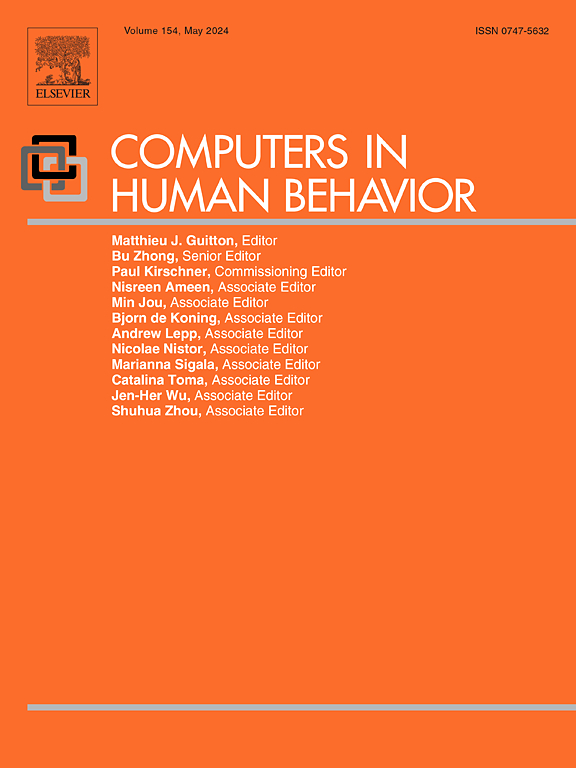性少数青少年男性发性短信动机与健康结果
IF 8.9
1区 心理学
Q1 PSYCHOLOGY, EXPERIMENTAL
引用次数: 0
摘要
性短信在青春期性少数男性(ASMM)中变得越来越普遍。然而,关于青少年发性短信与心理健康和危害健康行为之间关系的研究结果并不一致,而且仍然缺乏研究来检验发性短信的不同动机与这些结果之间的关系。此外,研究还没有调查性别认同的发展如何调节这些关联。本研究考察了内在和外在性短信动机与心理健康和物质使用结果之间的关系,以及性认同发展是否调节了这些关系。参与者包括332名16-18岁(M = 17.5)从事色情短信的ASMM。在线调查的问题包括:发送不同性短信动机的频率;性身份探索、承诺和不确定性的测量;焦虑和抑郁的症状;还有药物使用。发送性短信是为了获得性快感或浪漫的亲密关系,这是一种内在动机,与较低程度的心理健康症状有关。对强迫(一种外在动机)的回应性短信与更高水平的精神健康症状和药物使用有关。较高水平的性身份承诺降低了强迫性短信与精神健康和吸毒之间的正相关关系。出于性/浪漫原因的性短信减少了性别身份不确定性与焦虑症状之间的正相关。研究结果强调,在未来的研究和设计性短信教育课程时,有必要区分青少年发性短信的动机。本文章由计算机程序翻译,如有差异,请以英文原文为准。
Sexting motivations and health outcomes in adolescent sexual minority males
Sexting has become increasingly common among adolescent sexual minority males (ASMM). However, findings on the association between adolescent sexting and mental health and health-compromising behaviors have been inconsistent, and there remains a paucity of research that examines how different motivations for sexting relate to these outcomes. In addition, research has not yet investigated how sexual identity development might moderate these associations. The present study examined the relationship between intrinsic and extrinsic sexting motivations and mental health and substance use outcomes, and whether sexual identity development moderates these relationships. Participants included 332 ASMM aged 16–18 (M = 17.5) who engaged in sexting. The online survey included questions on the frequency of different sexting motivations; measures of sexual identity exploration, commitment, and uncertainty; symptoms of anxiety and depression; and substance use. Sexting for sexual pleasure or romantic intimacy, an intrinsic motivation, was associated with lower levels of mental health symptoms. Sexting in response to coercion, an extrinsic motivation, was associated with higher levels of mental health symptoms and substance use. Higher levels of sexual identity commitment mitigated the positive relationship between coerced sexting and mental health and drug use. Sexting for sexual/romantic reasons reduced the positive association between sexual identity uncertainty and anxiety symptoms. The results highlight the need to differentiate between motivations for adolescent sexting in future research and when designing sexting education curricula.
求助全文
通过发布文献求助,成功后即可免费获取论文全文。
去求助
来源期刊

Computers in Human Behavior
Multiple-
CiteScore
19.10
自引率
4.00%
发文量
381
审稿时长
40 days
期刊介绍:
Computers in Human Behavior is a scholarly journal that explores the psychological aspects of computer use. It covers original theoretical works, research reports, literature reviews, and software and book reviews. The journal examines both the use of computers in psychology, psychiatry, and related fields, and the psychological impact of computer use on individuals, groups, and society. Articles discuss topics such as professional practice, training, research, human development, learning, cognition, personality, and social interactions. It focuses on human interactions with computers, considering the computer as a medium through which human behaviors are shaped and expressed. Professionals interested in the psychological aspects of computer use will find this journal valuable, even with limited knowledge of computers.
 求助内容:
求助内容: 应助结果提醒方式:
应助结果提醒方式:


